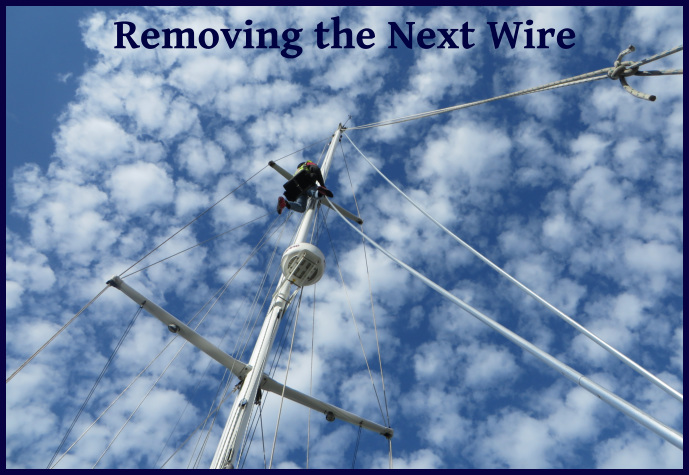The Blue View - Rigging Replacement
/We last replaced our standing rigging – all those wires that hold up the mast – in Colombia and Panama in 2002 and 2003. That time, I bought two big coils of wire and a box full of Sta-lok connectors and replaced each shroud and stay over a period of a couple of months. I remember doing the backstays and cap shrouds while at anchor in Cartagena. The intermediates and lowers were replaced in the San Blas Islands, with Kuna Indians watching from their dugout canoes. The forestay, with our Harken furler, was too long and difficult to manage on-deck, so we found an old dilapidated jetty up the Chagres River in the midst of a thick, dense jungle in Panama. We dropped a stern anchor and nosed up to the jetty, which was just long enough to stretch out the forestay. Instead of Indians, it was howler monkeys who watched and offered advice as I worked on it.

Now, that the rigging is reaching the end of its life and since all the rigging has to be moved from the old chainplates to the new ones, it seemed like a good time to replace it. I had planned to do it myself once again, which would have required a week or so, but with our visas running out, it would have been very tight time-wise. (Of course, there is also the fact that not only is the wire thirteen years older, so am I, and the thought of going up and down the mast 10-20 times doesn't seem that attractive anymore). We decided to splurge a bit and hire out the hard parts. The riggers would do the backstays, cap shrouds and furlers, and I would do the lower and intermediate shrouds. We should be able to complete everything in a day or two.
That was the plan, anyway. The rigger and two apprentices showed up a couple days ago, and other than two lower shrouds, they did pretty much everything. I kept busy polishing toggles and moving them from the old chainplates to the new ones. Four guys working on the rigging is a lot like the road construction sites we often drive by – three of us spend most of our time standing around watching the fourth guy do some work up the mast. Once a wire is removed, there is a short flurry of activity while the other three cut the new wire and move the connectors, then we all stand around watching the fourth guy reattach it and remove the next wire.
It took the four of us two and a half days to complete the job. Not the most efficient use of manpower, but labor in South Africa is inexpensive, and as they say, “everyone needs a job”. It was a lot faster than me doing it myself, plus I like to think the savings in the ibuprofen I would have needed every night went a long ways towards the cost difference.





